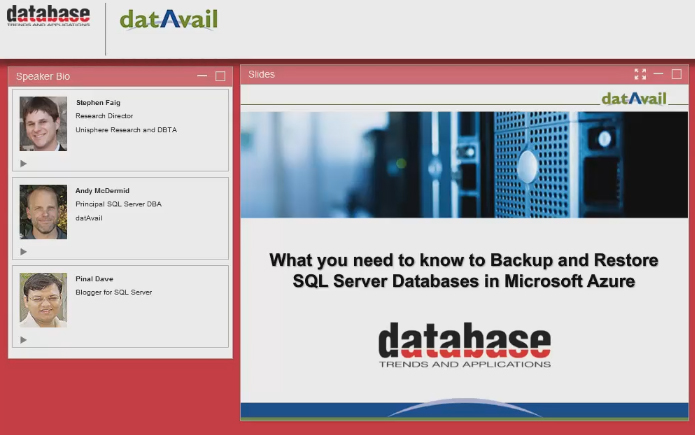Backup and Restore SQL Server DB in Azure

A solid database backup plan is just as critical in the cloud as it is on-premise, but running SQL Server on Azure virtual machine introduces a few new issues. Presented by Datavail’s Andy McDermid and SQL Authority’s Pinal Dave, this webinar will examine SQL Server in Azure VM by contrasting on-premise vs in-the-cloud database backup plans.
You will come to understand some of the advantages of using SQL Server in Azure by examining cloud-friendly SQL Server backup methods like a backup to block blobs as well as finding workarounds to real-world issues like Azure’s throughput limitations. We’ll also look at some of the tools and techniques available to manage backup files and restore SQL databases from Azure storage. Many use case scenarios will be examined during the webinar and one person will win a Datavailopoly, the only game by DBAs for DBAs.
Show Transcript
Watch The Webinar Here